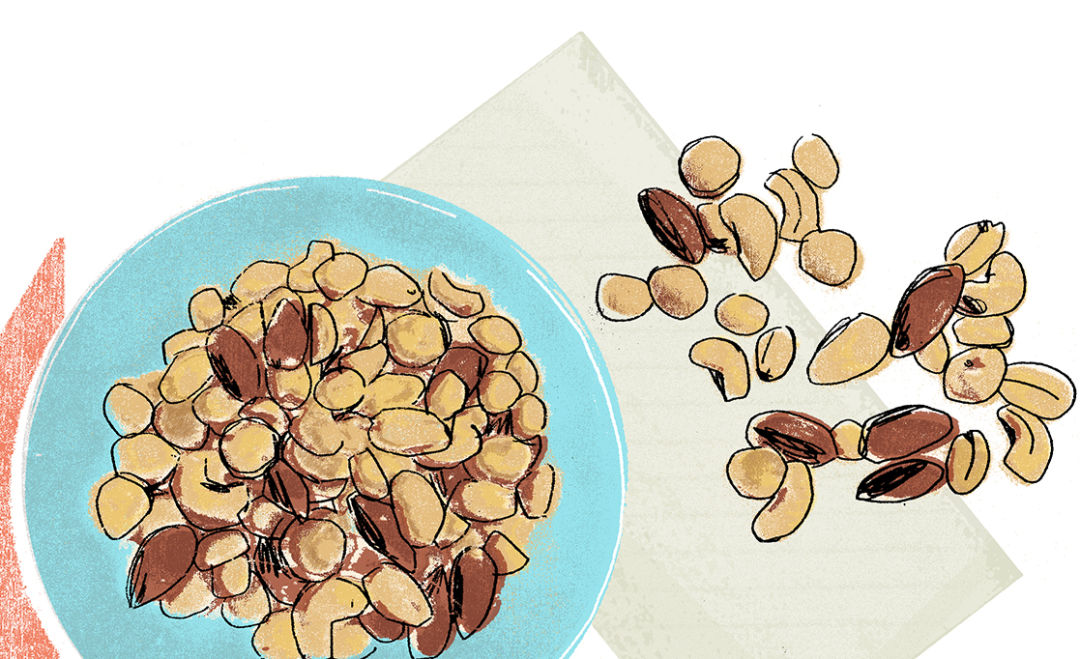How Sanitary Are Those Communal Bar Snacks?

Should you be eating from that bowl of communal bar nuts?
Image: Shutterstock
Booze and salty snacks go together like peanut butter and jelly, but it might not be the best idea to dunk your hand in that bowl of peanuts sitting out on the bar. Unless, that is, you witness the bartender fill the bowl with fresh goods. That’s the advice of microbiologist Valerie Harwood, chair of the University of South Florida’s department of integrative biology.
“I am not a germaphobe,” she insists. “I eat medium-rare hamburgers. I pick up stuff off the floor and eat it. But…” She laughs.
Harwood says the risk doesn’t come from what you might think: customers who don’t wash their hands after using the bathroom. Instead, it’s the result of simpler actions, like people rubbing their noses before diving in. Customers may not even know they’re carrying viruses that cause colds and the flu but are passing them on through the nut bowl. “If you’re at a bar, you may not think about touching your face or maybe coughing,” says Harwood. “That would be my biggest reservation.”
But even if you do indulge, the risk remains slight, Harwood emphasizes. Odds are you won’t catch a deadly illness. The most likely sickness would be an upper respiratory infection, she says.
We decided to take our research a step further. We scooped up some nuts from a bowl at a local happy hour—making sure not to handle them to introduce any contamination—and took them to Deibel Laboratories, a food microbiology lab with offices in Sarasota and other cities around the country. Lab manager Bill Rose tested the sample for coliform and other bacteria. The verdict? He found a count of 15 bacteria per milliliter. “That’s low,” he says. “If it were up around 10,000 I’d be worried.” The coliform count was equally insignificant, leading him to conclude that our sample presented no safety or sanitation issues—“not at all.”
That’s just what Harwood would have expected. “People are too germaphobic,” she says.



